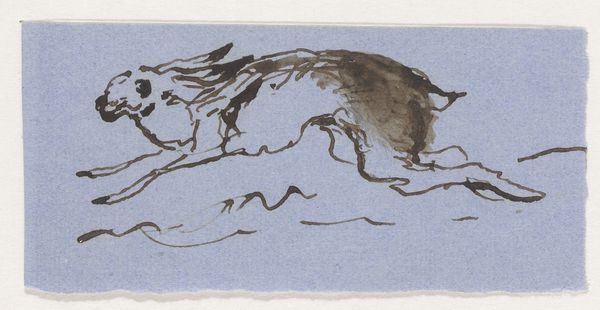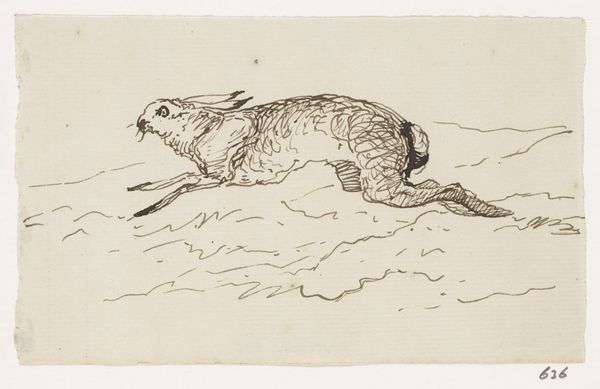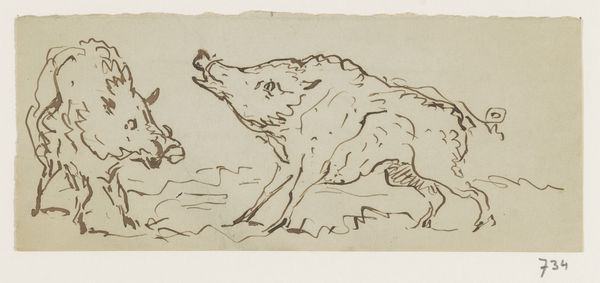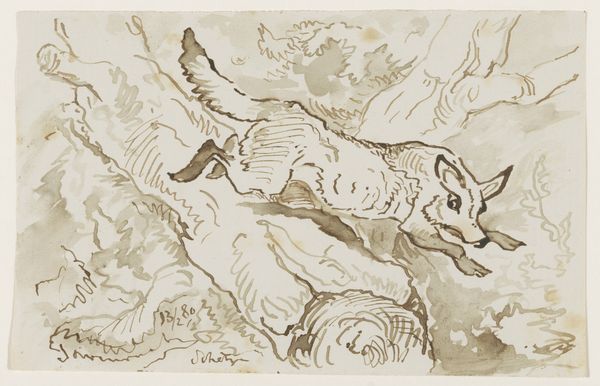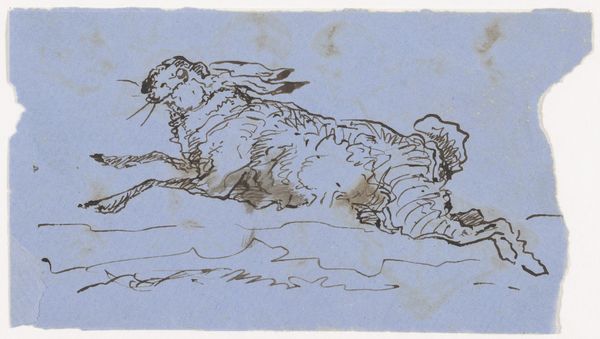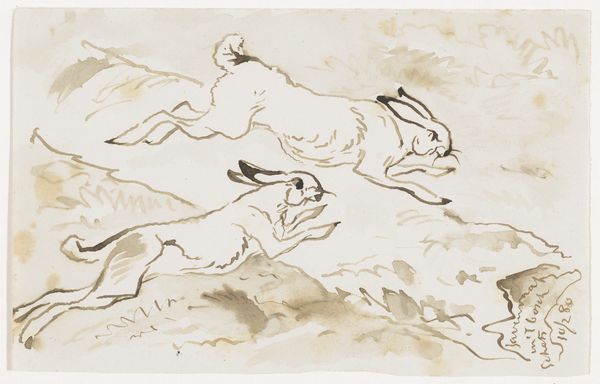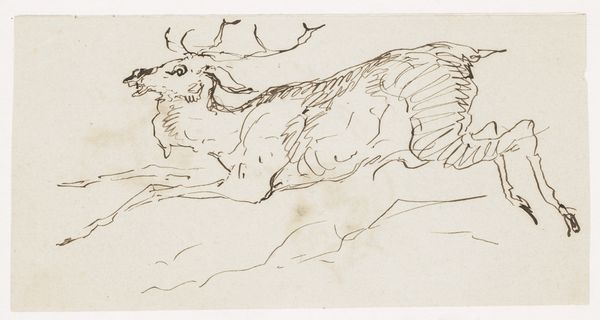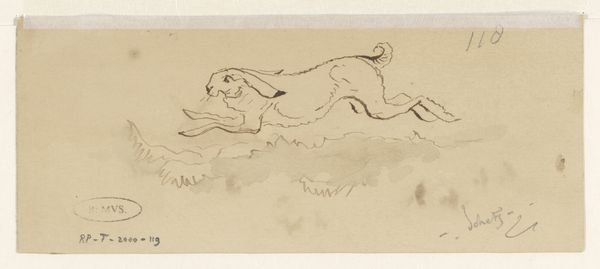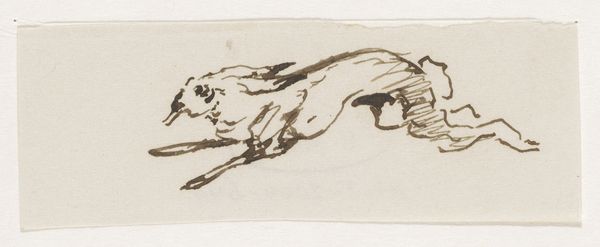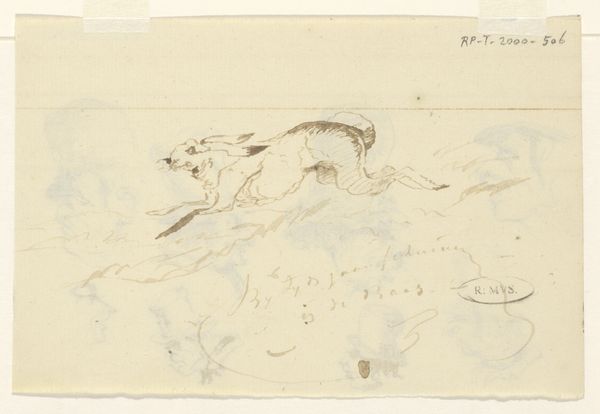
drawing, paper, ink
#
drawing
#
pencil sketch
#
landscape
#
figuration
#
paper
#
ink
#
watercolour illustration
Dimensions: height 104 mm, width 165 mm
Copyright: Rijks Museum: Open Domain
Curator: I’m immediately struck by the stark contrast in tones; the animal is clearly defined with what appears to be ink and watercolour. Editor: Indeed. What we're looking at is a drawing called “Wolf of vos,” possibly dating from 1880-1882, attributed to Johannes Tavenraat. It's done using pen and ink, with watercolour, on paper. You can find it here at the Rijksmuseum. Curator: It has an almost heraldic quality about it. That leaping pose evokes power, alertness, freedom. The wolf motif is so prevalent in folklore. Do you think Tavenraat was consciously playing with those established visual tropes? Editor: The drawing definitely embodies characteristics of a pencil sketch, focused more on gesture than specific narrative, making it difficult to pinpoint precise intentions related to iconography. I see it as more exploratory – looking at how effectively different washes convey volume. Curator: Perhaps, though the choice of the wolf itself… given the medium is paper, pen and ink, the process of transferring the image via ink could indicate a deliberate permanence. Paper might suggest transience but the medium choice resists it. The labour and artistry that makes it more than just a simple study or illustration elevates this drawing to be exhibited in such museum! Editor: A good point, actually. The medium speaks to the skill involved, beyond a mere rendering. What resonates for me is how that lean form in motion tells of nature versus taming and domestication. Maybe that resonates with audiences today in how we look at animals in our landscape versus seeing it within zoos, or other types of enclosure! Curator: Absolutely, and observing the raw economy of the line work contributes a kind of unsentimental energy, doesn't it? It resists sentimentality through pure practicality in method, almost like the drawing is as functional as what the animal represents, what it must practically embody! Editor: That’s interesting because initially I interpreted its loose execution with expressive brushwork that embodies the feeling of an uncontainable wildness within its depiction!
Comments
No comments
Be the first to comment and join the conversation on the ultimate creative platform.
